5 Sporting Directors Manchester United Should Look At
“@ManUtd, please hire a Sporting Director #GlazersOut #FullSaleOnly”,
“Hire Michael Edwards while he is free, I am on my knees @ManUtd”,
“Hire Paul Mitchell @ManUtd and we are cooking”.
You must have seen such a trend of tweets getting spammed down your throat if you are active on Football Twitter. Even at times, you must have had a question that what even is a Sporting Director, what even he does and why is such a position becoming a norm at not only the top level but even at lower levels of modern-day football, that even clubs at bottom tiers are now hiring the same to help them punch above their weight in an efficient and sustainable manner on small fractions of operating budget.
What is a Sporting Director?
As the name suggests, a Sporting Director means a person at Director level responsible for the sporting activities. In Basketball (especially College Basketball), you have Athletic Directors who work closely with the coaches, analysts to see the progress and readiness of the college players and also spot up and coming superstars in order to lure them to represent their respective colleges on scholarships. And also help the young and budding college players to land professional contracts through their contacts with professional teams.
In baseball, you usually have your General Managers (GMs) who operate as a managerial/directorial level professional to oversee the sporting activities for a franchise. That means working with the coaches, scouts and analysts to solve both performance and recruitment related problems and come up with efficient solutions by working in tandem with the aforementioned departments.
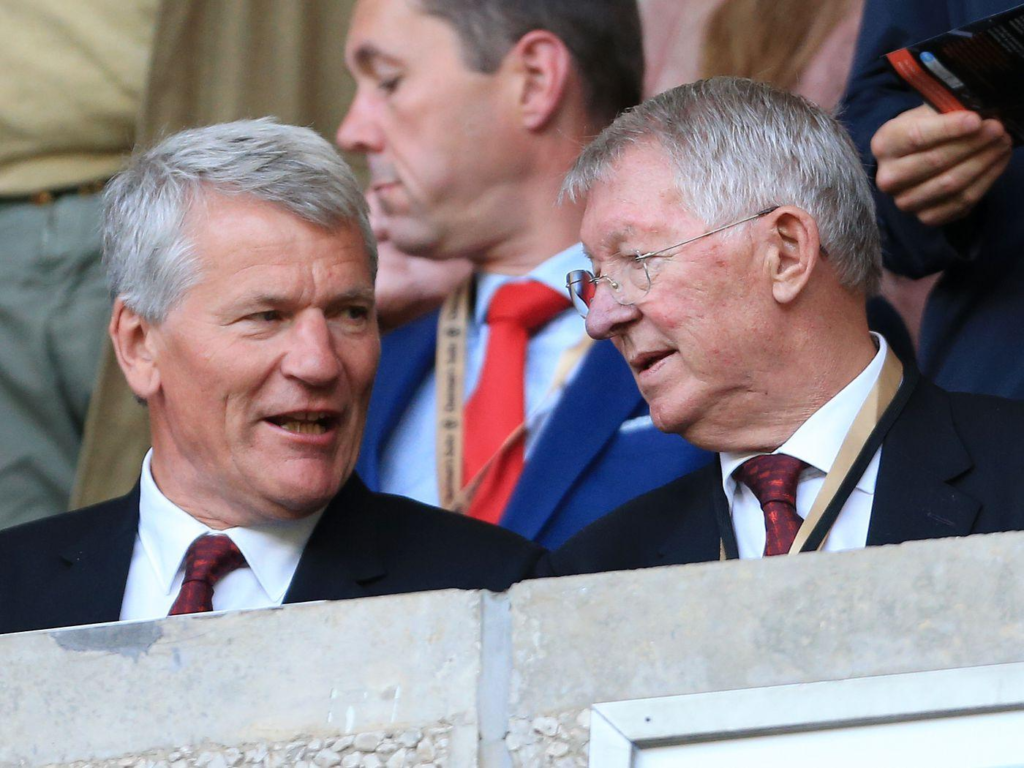
In football, there is actually no such direct definition for a Sporting Director because of how rapidly this sport evolves and takes up influences from everywhere. Sure, you have a Director of Football or DoF (which has become a new trending lingo among the fans, casuals and die-hards alike). But not every Director of Football is alike because of so many variations when it comes to day-to-day operations of a Football Club. There is no defined way of ownership model in Football. Every club has a different way in which the operations are carried out, hence different hierarchies and different roles.
Types of ownership models
For example, you have some local businessman who made it big and wants to pump the money into his local side in order to break the barren streak of no trophies and buy off the competition as soon as possible using the age-old flawed logic of buying best players = winning trophies left right and centre straight away; fail at this attempt, lose your own wealth in the process and putting your beloved club in peril of folding off from existence because of financial irregularities.
Then you have your usual Sugar Daddy owner, some hot-shot billionaire of a mega corporation owning various Franchises in USA, thinking that demographics of sports culture in Europe is same as in USA, make the institution which has been there for years, a personal cash-cow of the theirs by bleeding the fanbase dry and alienating the working class people who piss blood and sweat all week long just to enjoy a game of football on the weekend: a young man stuck in his dead end desk job who wants to enjoy some quality time with his mates in either a pub or in the stands by watching the game or a single parent of two who has to work an extra shift in one of their jobs just to earn that extra bit of money so that they can surprise their kids by taking them to their first ever match and buy official merchandise from the club shop or an elderly couple who has been going to watch every home game for decades but cannot renew their season ticket because of unregulated pricing.

Or some Venture Capitalist owning a hedge fund ready to take over the club which was brought down to its knees by the previous owners who wanted to scratch their itch of being the alpha by taking decisions in capacity of a role about which they had no qualification or experience; at a cut price deal in order to make it their personal investment just to be sold off for a profit later or used in some financial deal to get any other coveted asset.
And then you have the imperialistic, despotic and murderous regimes of some country who made their wealth by exploitation of their own people; who have the realization that the natural resources which they sold to the world in return for money and political favors are depleting fast. So, they are now ready to diversify their own wealth into various other sectors, ready to pump billions in order to earn not just the money back but also buy off political favors for the future and mask their bloody stains of generations of exploitation, discrimination through goodwill and positive PR. In short, sportswashing. And football as an industry has provided a great opportunity for actual nations to pump off clubs and bypass the financial rules which have been put to make It an even ground for all to compete, money made by exploitation, while pushing their own degrading political and discriminating beliefs under the pretence of religion and the banner of “Sports and Politics must not be mixed together”
Last but not the least, you have fan owned, fan funded clubs as well with various different types of fan-led coalitions and ownership models. The co-operative model in Germany where the club members, i.e. the fans have the final say by having more voting rights just that the institution cannot be overtaken by a hostile takeover from any external body. Then, you have the Socios of the club in Spain and Portugal; who vote to elect the sporting body who will then run the operations of the club.
I don’t want to generalize that external ownership is BAD and fan ownership is GOOD. There are various cases of external ownerships being good and delivering results by not putting the club at peril by gross mismanagement. And there are various cases of fan-led clubs who had best interests of the club and the community they represented but weren’t fit for running the club. One major difference maker in such situations can be a competent Sporting Director.
But how do you know that a Sporting Director is competent and the ‘right fit’. And again, I have to be the bearer of bad news; that there is no straight answer to that.
Types of sporting director models
Various factors are involved in finding the right person fit for the role of a Sporting Director in Football. But the biggest factor is to know what you actually want the club to be! Yes, the basic SWOT analysis is needed to be done by the administration by keeping in mind all the other factors (I’ll come to some of those in a while, later on in the article) in mind before choosing the candidate.
Do you want the club to be a self-sustainable one, which earns of money through some initial investment at start but then you need to wait for some years to get the return, both in terms of prestige (i.e. trophies) and money through organic growth of the club so that it can fund itself and be competitive both and off the pitch?
Or go for the short-term route by straight-away investing huge sums and win the lot but also comply with financial rules of the competitions it takes part in by selling and buying strategically and not lose the competitive edge?
Or invest in youth by revamping the grassroot level programmes to nurture the next generation of superstars such that they make up the core of the team for years to come and this cycle keeps on repeating. Is it also another way of becoming self-sustainable?
Or if you have a plan of implementing a multi-club model where you want to theorize a certain brand of football and strategically target to buy youngsters and train them in same kind of football; right from youth teams to senior team by providing a pre-planned development plan for them to grow and move up the ladder by joining the bigger club as part of the multi-club model?
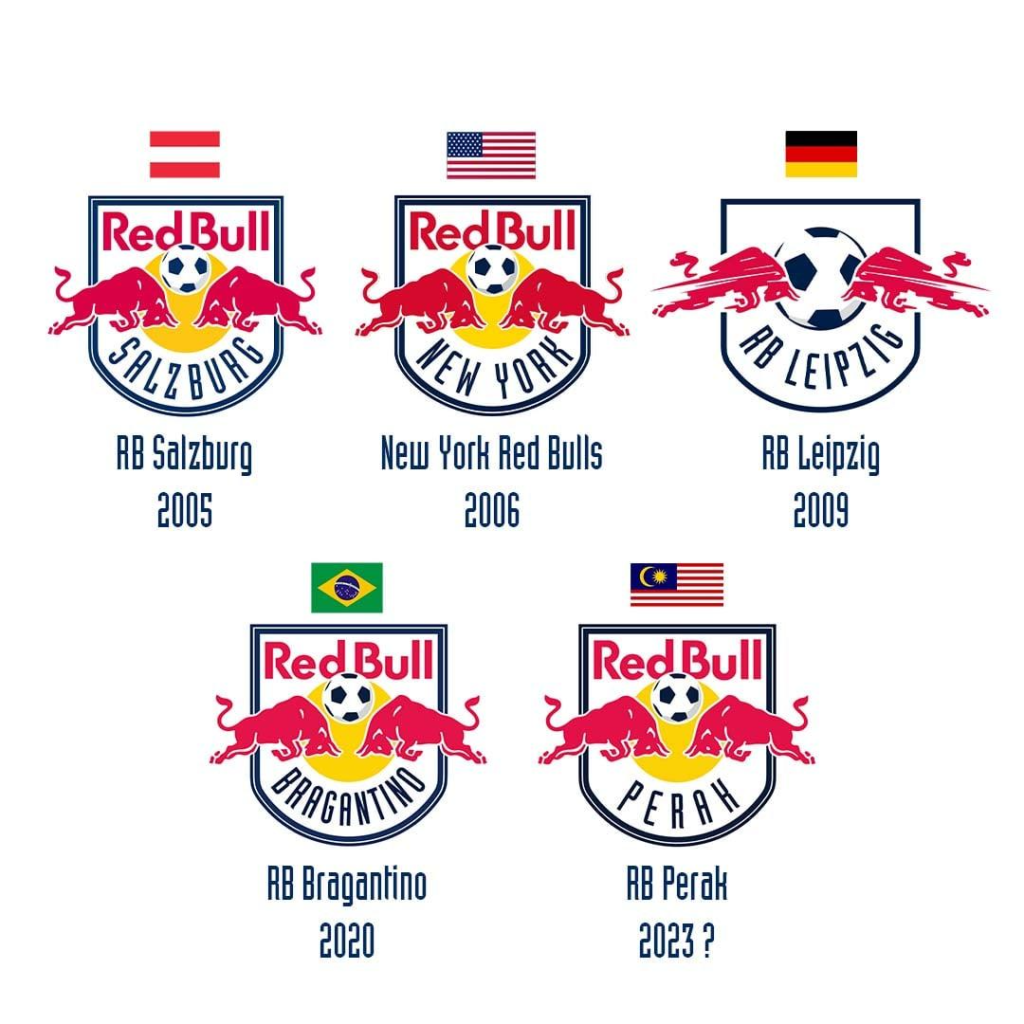
There are pros and cons of every kind of model which the said club wants to implement as a ‘philosophy’ and that has to be weighed down first and foremost by the administration. Then, only you can hire a person who may be familiar with that philosophy. Or hire someone who may have a set philosophy of their own (similar to what you wanted) and the experience plus qualification to mould the club in the way you want (given you have the clarity yourself beforehand about what you want) but at the expense of that candidate, i.e., handing him the key responsibilities of sporting matters and at times, even some key financial matters. Or maybe someone with contacts in the industry who will get you brilliant deals on players and sell off assets on profit; to keep the cash flowing into the club for the investment on players and coaches. Or someone, who knows it all- right from managing stingy bosses who have the tendency to scratch their itch by poking their noses where it is not required to managing the needs of coaches and players; and also, coordinating with the recruitment staff to plan for upcoming seasons.
In all of this, the tendency to do proactive planning and being transparent to every stakeholder is of utmost importance for a Sporting Director.
Why do Manchester United need a Sporting Director?
Now, coming to the curious case of Manchester United. A legacy club with a lot of prestige, hailing from a major town with working class roots who take pride in having a tradition of integrating young and budding youngsters from nearby areas of Manchester into the senior team, the tradition which has been diluted under the current ownership of Glazers Family from USA. Their cross-town rivals, Manchester City have completely overtaken them in a lot of areas; a state-of-the-art training and youth facilities, a world class modern stadium. All of that, although has been funded by every kind of financial doping known to mankind and it goes unchallenged because their owners have bought off the people who govern not only the sport in the country but also the leaders who actually run the country. But their owners knew what they wanted from day 1 and got the right set of personnel to execute it, which Manchester United owners haven’t done in their entire span of ownership. And they still don’t know what they actually want from the club; hence the strong backlash (18 years too late) from the fanbase to sell off and not dilute the identity of the club while their rivals keep on outclassing them on and off the pitch.
This year may finally be the year where the huge fanbase of Manchester United will see the end of the ownership of Glazer Family and their gross negligence in keeping the club competitive on and off the pitch despite spending 1+ billion pounds of the club’s own organic financial resources and still getting inconsistent results. But then, their options for replacement are also limited; final shortlist of new stewardship being the INEOS group led by Sir Jim Ratcliffe (who is a proclaimed Manchester United “supporter”) and “Sheikh” Jassim, a mysterious Qatari bank manager (not associated to Qatari state fund and royal family as per his own claims), who just happens to have 6 billion pounds (asking price set by the Glazers Family to sell their entire stake in the club) of the King’s finest pounds in a bank account somewhere, also a proclaimed Manchester United supporter. The fanbase is so angry with the ownership of Glazers Family (which is justified given the mismanagement) that they will even go in favour for some Regen of Hitler/Mussolini as owner of their beloved club, just to see the back of Glazers. In that comparison, some Qatari bank manager whose real identity isn’t even known to the masses or a Petrochemical conglomerate is just a level 1 evil boss. But “we want our club back”, eh? (Via some superficial external party as “owner”).

While both parties have laid out their plans of redeveloping club from scratch: redevelop the facilities and stadium, write off debt (by debt, the debt put on the club by Glazers as part of their leveraged buyout back in 2005 and not the transfer debt because it can’t be written off in one go), back the manager in every possible manner and taking the Alice back to Wonderland but there is still no coherence in how they exactly want to achieve all this. It’s like selling a project to potential clients at high margins but without any set deadlines and not enough clarity of requirement for the development.
And that’s where they will need the expertise of Sporting Directors: not just a Director of Football (focused more towards recruitment side and finding best possible finds as per the needs of the manager and his preferred coaching philosophy) but also a Technical Director (who should be the main person to identify and negotiate the contracts for the staff as per the “philosophy” and push for the said “philosophy” at all levels of the organization. Darren Fletcher and John Murtough are not at all qualified to play their respective roles) in order to gather that functional requirement in order to kickstart the development; so that once all the development is done- it can go through QA testing and then finally getting deployed in the Production environment.
And there has to be complete transparency between all the stakeholders here, from clients about what they actually want from their downstream application (the fanbase) to the parent company (the prospective new owners) about how they want to develop the required application and the developers (Sporting Directors) hired to do the requirement gathering and do the development using best possible and effective industrial practices; keeping their leads and client informed at regular intervals about everything and also help the junior developers (The coaching staff, performance and recruitment analysts, scouts) at all steps possible.
What Manchester United have:
- A great grassroots structure which helps them to scout and provide scholarships to budding schoolboys, providing them with the opportunity to earn a full-time professional contract with the club and rise up the ranks.
- A more than decent scouting system (both in the UK, Ireland and abroad). Just, that they lack the structure above them to make the final decisions as per the basic reports handed over by the scouts.
- Current manager in Erik ten Hag. He knows what he wants and till now, has shown flexibility to get results but at the end of the day, he is a specialist manager and will always need certain players with a specific skill set in some positions without which his plan A may become redundant. Hiring such managers means you will eventually buy into their philosophy (which you think will yield you results that you want), not the other way round.

What Manchester United don’t have:
- Idea about what they actually want the club to be. And this discussion has to happen, and the executives have to initiate it. And they cannot neglect the fans in this, because the identity of the club is because of the community. Of course, a club this successful wants to win trophies but how to reach that stage? How to reform the club so that they can reach the stage of challenging in all competitions every year. Such kind of discussions.
- Lack of Coherence from executives. The current ones, the prospective new owners. Just blank promises but when you go to ask how they will achieve those? No strategy, just plain old; throw the money and buy success.
- Lack of any sporting structure. Letting people do things, which they are not qualified to do and eventually that affects their own job. For example: Erik ten Hag knows about what he wants in the players but he can’t identify the best possible player (not just tactical fitment but financial package as well, which you don’t expect a manager to know) as per his expectations. And that isn’t the role of managers. Jurgen Klopp with Michael Edwards and Jurgen Klopp without Michael Edwards is yet another example; the way Liverpool have done transfers which haven’t fixed their gaping holes and the financial package offered to players going against the structure set by Michael Edwards. With. more money spent; Liverpool still looks bereft of challenging.
- Wrong kind of appointments done at administration level: For example- Ed Woodward before and John Murtough, Richard Arnold, Darren Fletcher et al now. All are good at the commercial side but that doesn’t equate to them calling all the shots at recruitment and do that without any qualifications and/or experience for it and also without scrutiny from higher ups when the club has spent upwards of one billion pounds without any efficiency. Money isn’t an unlimited commodity, no matter how big of a club you are, no matter how prestigious you are. As someone said, “the dildo of consequences never comes with lubrication” (Pardon my French)
- Patience. Neither do the fans have enough patience, nor do the people running the club. Everyone just wants more of this, more of that. Too many ingredients but not enough time for them to cook together (and most of the time, even ingredients are also wrong. Or the amount of each ingredient is wrong. Or sometimes, even the recipe itself is altogether wrong).
What kind of Sporting Director do Manchester United need?
Now that we know of the dos and don’ts, let’s look at the certain qualities which are a must in finding a Sporting Director for Manchester United, no matter who is the owner of Manchester United.
- Should have great knowledge about scouting, recruitment (yes scouting isn’t equal to recruitment, both are different but both terms are thrown around very casually). Candidates should be flexible enough to learn about new innovations being implemented in the industry which can help the club provide a cutting edge against their opposition.
- Ability to work with the manager, understand his requirements and then work in tandem with the recruitment team to deliver those targets. Not just the new shiny toys but new shiny toys who are best possible fit as per the tactics/playing style and the best possible option financially as well.
- Candidates shouldn’t just be good at buying but equally good at selling as well. This is one area where Manchester United have struggled a lot. Selling when opportunity arises is also an important factor in order to keep healthy finances and raise the transfer kitty as well in order to upgrade the squad.
- Candidates are required to have a great Talent ID. Sometimes, the player you want may just be laying there in the academy, just that you need to create a pathway for the player and a positive environment for the prospect to thrive in. Plan transfers in the position of the prospect in such a way that his playing time isn’t neglected or that the pathway you had devised isn’t affected with future signings.
- Knowledge of not just Sports but knowledge of Business side of the Sport and Management is also a must. Candidates will not just be working closely with the coaching staff and recruitment team but even with the executives who work directly with the owners. The job of the candidate will be to keep everyone on the same page and define boundaries whenever possible, so that work doesn’t get spilled over and picked up by people who don’t know how to do it.
We know about the Michael Edwards’s, Paul Mitchells, Luis Campos of the world and while everyone of those is a great Director on their own and if hired; will easily fix many underlying issues when it comes to football matters at the club. But I want to look at other (you can say ‘gone under the radar’) Director of Footballs who can work with either ownership (given they are aware about the direction in which they want to go in order to meet the targets, as promised by them to the fanbase).
So, here we go.
5 Sporting Directors Manchester United should look at
- Florent Ghisolfi
Age: 38 years
Nationality: French/Italian
Current Club: OGC Nice
Current Contract: 3.5-year contract running till 30th June, 2026
Previous Clubs: RC Lens, FC Lorient (as a coach)

Franck Haise led RC Lens has become a household name in not just France but even across the English Channel with his modest side punching well above weight in Ligue 1 ever since the side hailing from the North of France has won back the promotion to Ligue 1 in 2020. A major reason in Lens re-writing their underdog story has been their strategy in doing shrewd transfer business relying on not just purely old school method of scouting (the ‘eye test’) but also incorporating modern approach to scouting and then making their recruitment strategy. RC Lens have had a great grassroot programme which has yielded them many talented players over the years. Coupling that with strategically targeted players who have been undervalued and fit the manager’s game plan and promoting players from youth teams has yielded them great results; UCL Qualification is secured in just the 3rd season after getting promoted; that too by scoring 80+ and going neck-to-neck with Paris St. Germain (there is a possibility of ending just 1 point behind them)
The main man pulling the strings in the background? A 38-year-old ex-Footballer: Florent Ghisolfi. RC Lens appointed the former SC Bastia and Stade Reims player as Director of Football in 2019 right before their start of Ligue 2 season under Phillipe Montanier (yes, the current Toulouse manager who won them their first ever trophy recently- the Coupe de France). Ghisolfi’s first step as DoF was cashing in on their 2 youngsters- Modibo Sagnan and Jean-Rincer Bellegrade to Real Sociedad and RC Strasbourg respectively in order to raise some capital in order to invest into the squad. A cut-short 2019-20 season due to Covid-19 saw LFP call off the Ligue 1 and Ligue 2 and award the winners, European qualification, relegation, promotion spots as per the current standing. And RC Lens were 2nd in Ligue 2 at the time and a promotion was on the cards.
But Phillip Montanier departed to take over as manager for Standard Liege in Belgium. And, its your first season back in the top flight after a controversial period in the history of the club. Now, your gut feeling will say to go for some survival expert who can ensure that the club doesn’t get relegated and become a yo-yo team. Instead, Ghioslfi promoted the B team manager, Franck Haise to take over the vacant managerial position at senior team.
Some brilliant transfers followed after this, a certain Jonathan Clauss on a Bosman transfer from Arminia Bielefield, Loic Bade from Le Havre on a Bosman transfer again. Seko Fofana, Ignacius Ganago, Facundo Medina, Wulker Farinez, Arnaud Kalimuendo, Corentin Jean, Gael Kakuta also joined the team in order to make the squad competitive for top-flight football. And RC Lens surprised everyone with their free-flowing football, patiently waiting to hit the teams on the break through their use of wing backs as a primary source of creativity. A 7th placed finish was well above their pre-season targets. Yet another season in Ligue 1 beckoned. Although, team had to cash out on some players, Ghisolfi’s eye for undervalued players who fit into the manager’s playing style eased that transition very easily.
South America, lower divisions in France, Scandinavia and Polish players became the target for recruitment in order to replace the outgoings and keep a net positive in terms of expenditure. Yet another 7th placed finish followed and yet another successful transfer window saw the Lens side punch even above their ability and they are now looking at UCL qualification.
This great work in arguably your first ever job as a Director didn’t go unnoticed. That Petrochemical Conglomerate who is looking to buy the majority stake in Manchester United? Well, he owns OGC Nice as well. And, they hired Florent Ghisolfi as their new Sporting Director; especially with focus towards recruitment in December 2022.
Now, Sir Jim Ratcliffe is currently in pole position to take over as Manchester United with aims of making a strategic partnership with OGC Nice, given UEFA is looking ease their rules on having multi-club ownership model exist in the market (cough-cough Please the same despots, sugar daddies to pay UEFA their royalties and cut to make it even more of a closed shop cough-cough). Having Florent Ghisolfi as a Director overseeing the operations at each club isn’t that much a farsighted thing given both clubs have a big weakness; which are Ghisolfi’s strength: Recruitment. He has been able to deliver results with a modest budget, does a deep dive into the youth system to promote highly rated youngsters and work with the coaches to provide a pathway to the first XI of the senior team. Imagine the sheer potential of a relatively younger person who will stay for years with you as a Director of Football with a large kitty at his behest and letting him lay down a structure to provide his insights, a structure which both clubs lack.
To summarize.
Recruitment Knowledge: Central Europe, South America, North America, North Africa
Shared Vision with Board: Help the club to punch above weight by using the combination of smart transfers and utilizing the youth academy.
Pros: Good Talent ID, Knowledge of different markets and finances involved in the game
Cons: Relatively Inexperienced (but everyone is at one stage of their career), A possible Language and Cultural Barrier
Devil’s DNA Score: 7.5/10
- Florian Maurice
Age: 49 years
Nationality: French
Current Club: Stade Rennais
Current Contract: A contract running till 30th June, 2025
Previous Clubs: Lyon (as a scout)

Just like Florent Ghisolfi, Florian Maurice is an ex-footballer and in his first ever role as Director; managing the day-to-day operations of Stade Rennais. But, in comparison to Florent Ghisolfi; Florian Maurice has a lot of experience in working in other roles post playing career. A local boy from Lyon, Florian enjoyed a decent playing career, playing for OL, PSG and OM and also plying his trade in Spain with Celta Vigo. He also won 6 caps for Les Bleus, scoring one goal. Once, he hung up his boots; he straight away joined his local side, Lyon as a scout- with his main focus being spotting young players from various grassroot programmes deployed by the club.
He then rose up the ranks and became a chief scout for OL- before the start of 2014-15 season; a post he held till 2019-20 season. Meanwhile, in the same time period; Stade Rennais slowly grew as a club, from being one of the relegation fodders to mid table stability to challenging for European places, peak being the 2019-20 season where they secured a UCL spot.
In order to make the club grow even further and stick with their philosophy of using the club’s famed academy and policy of buying exciting U23 players for the first team. Rennes turned to Florian Maurice to take over as their Sporting Director. His official title with the club is that of a ‘Technical Director’ but he oversees not just the recruitment but also finding the manager and coaches for not just first team but B team and youth staff, to keep the continuum between the set philosophy by the executives of the club.
He is like the one -man army, sandwiched between the club owners and footballing division of the club. Under his tutelage as ‘Technical Director’, Rennes have grown in reputation; regularly challenging for European spots, promoting highly rated prospects from the academy and providing a clear-cut path for them to regular first team football and also signing some exciting U23 players from abroad. Although, many in the industry will call a club like Stade Rennais as a ‘stepping stone’ but with such kind of footballing operations, club is still investing like crazy in their own youth setup while doubling down on scouting budget to find great prospects from abroad, making the club self-sufficient in the process.
And some of the transfers done by Rennes against some stringent competition is all down to Florian Maurice being able to sell the project to prospective players and their camp. Jeremy Doku, when Liverpool was negotiating with Anderlecht and his camp; convincing Kamaldeen Sulemana to snub a club like Ajax to join Rennes; snooping right under the noses of various German clubs to seal the signing of Lovro Majer, getting a left footed ball playing center back in Arthur Theate for a cut price knowing very well how big the market for such players is and even to some extent, sealing the signing of Amine Gouiri under the noses of various PL Clubs is all down to Florian Maurice. Along with dipping their noses in the transfer market to find such gems and providing them with a pathway to take that next step in their budding careers, the ex-World Cup winner has also provided many youngsters from the academy with first team opportunities. The likes of Eduardo Camavinga, Mathys Tel, Desire Doue, Guela Doue, Lesley Ugochukwu have taken their chances to step up to the first team and make their place in the squad. And Camavinga, Tel have even sealed moves to Real Madrid and Bayern Munich respectively and made a name for themselves at the grandest stages of all. Even players like Martin Terrier and Benjamin Bourigeaud have seen a renaissance ever since Maurice has come at the club and hired coaches who prefer a patient possession-based setup, which suits the players and their technical skillset.
Now, Manchester United do need a commanding figure in between the manager and their new owner, who help them keep the continuation without losing any competitive edge. Someone who can appease the owners and the managers, keep them on the same page and listen to the fans as well; all while doing the thing they are good at. An already brilliant youth system in place, an already existing scouting system which is decent but can be improved and you get a person who has loads of experience when it comes to scouting and recruitment to lead the operations. Florian Maurice can be a decent punt to lead the footballing operations at Old Trafford.
Recruitment Knowledge: Central and Eastern Europe, Scandinavia, UK & Ireland, North Africa, South America
Shared Vision with Board: Help the club by appointing technical staff who help to impose the philosophy of integrating younger players with high potential in the First team and provide the team with undervalued, high potential youngsters from abroad who can be integrated into the playing style preferred by the club.
Pros: Brilliant Talent ID, Brilliant Negotiator, Knowledge of different markets and finances involved in the game, Highly experienced when it comes to recruitment
Cons: A possible language and culture barrier
Devil’s DNA Score: 8.5/10
- Phillip Giles
Age: 47 years
Nationality: English
Current Club: Brentford FC
Current Contract: A 3-year contract signed in 2022, lasting till 30th June, 2025
Previous Clubs: N.A.

I have nothing but respect for Brentford and how they have played a massive part in removing the stigma around the amalgam of Data and Football, delivering results left right and centre. What Matthew Benham (at Brentford) and Tony Bloom (at Brighton and Hove Albion) have done is nothing short of commendable. A decade back, both clubs were sitting in League 1 with nothing but dark and gloomy days ahead of them. But then both of them came with their different (but somewhat similar) theory to integrate the use of data in making efficient decisions and minimize the margin of error which has impacted their respective clubs and taken them to uncharted territories. Both clubs are flying high, albeit the route they have taken to reach the Premier League has been different but their main base of running footballing operations has been to include the use of Data. (No, they haven’t done a ‘Moneyball’. It’s a different concept altogether).
Both Matthew Benham and Tony Bloom made their investment in the sports betting industry, understanding the complex nature of a game as volatile and unpredictable as Football and broke it down through the use of the principles of Statistics and Probability. While Tony Bloom stuck through with Brighton, Matthew Benham first implemented his theory with Danish club FC Midtjylland. Once, he was able to find success there He turned to his boyhood club Brentford and completely restructured the running of the club.
And here comes the hero of this section of the article, Phillip Giles. A Mathematician by profession with interest in football, Phillip joined the sports betting industry in the hopes of combining his expertise in maths and football, eventually landing a job with SmartOdds, a company owned by Matthew Benham. Eventually, Benham got to know of the work done by Giles over the years in the industry and his theory of combining data with football; eventually landing him a job in football with Brentford.
After joining the club, Phillip realised one thing which was very different from his previous job, that in his previous role managing a ‘regular business’; they are trying to build a product and sell it off to interested buyers. But in football it’s about people management. Using the services of SmartOdds as a data vendor, Brentford under the leadership of Phillip Giles has used this data to hire people who are the most efficient in their roles and fit the club perfectly. At the end of the day, it’s about managing the people, just that you have used data to minimize your margin of error to get them. It counts from hiring technical staff to coaching staff to players. And his track record with such methods is there to speak.
When Brentford completely annihilated Manchester United at the start of the season, it was a tale of 2 very different clubs. Manchester United lack in all the departments where Brentford have become the experts. Manchester United have spent bucket loads of money without any efficiency for the last 10 years. They will keep on spending that kind of money irrespective of any ownership, just that they need someone to help them realize their inefficiency, rectify their mistakes and improve the efficiency of the process. For once, why not price out a certain Director who has developed into an expert in such a role. Club has no strategy and even lacks that human touch, that sense of togetherness and they desperately need such a personality who knows the best of both worlds.
Recruitment Knowledge: UK & Ireland, Scandinavia, Central Europe, Africa (through shared knowledge with FC Midtjylland)
Shared Vision with Board: Help achieve the objectives of the board on season-by-season basis by bringing in required personnels who align with the same objectives; who have an open mindset when it comes to integrating data with the conventional methods of recruitment and coaching, to take best possible decisions with minimum margin of error.
Pros: Extensive networking and contacts with the industry, Knowledge of different markets and finances involved in the game
Cons: None
Devil’s DNA Score: 9.5/10
- Simon Rolfes
Age: 41 years
Nationality: German
Current Club: Bayer Leverkusen
Current Contract: A 2-year contract running till 30th June, 2024
Previous Clubs: N.A.
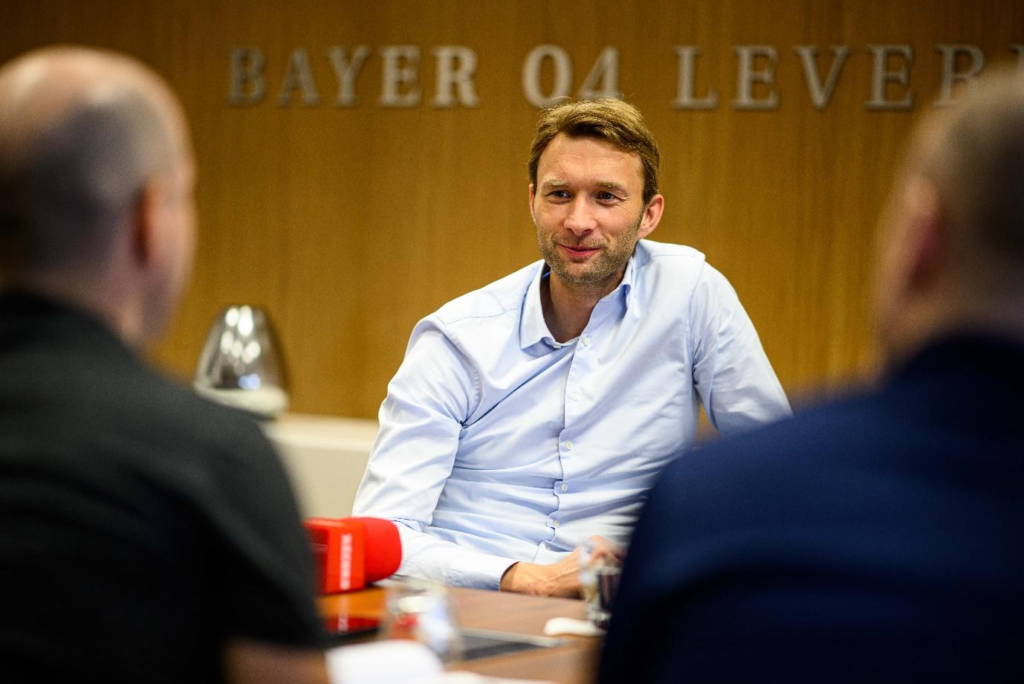
An industrious defensive midfielder in his playing days, now working his way up the corporate ladder at the club where he found success as a player. The rise of Simon Rolfes in his role as Sporting Director over the years may not have eclipsed the topsy turvy ride of Die Werkself on the pitch but many of his decisions when it comes to recruitment and defining the playing style has been a positive for the club.
The ex-Germany international hung up his boots after playing for 10 years with Bayer Leverkusen, spending 10 of his 12 years as a professional footballer with the club while enjoying a decent international career with Die Mannschaft, 26 caps and 2 goals with runners up medal in Euros 2008 and semi-finals in 2010 World Cup. After the retirement, the then 32-year-old wanted to get into an administrative role so he started to prepare for life after football. 1 year as a head of youth development for Bayern Leverkusen saw him attract the attention of higher ups at the club, especially that of Rudi Voller who was at that time Managing Director of Sports for the footballing division of the institution.
Simon was quickly appointed as Sporting Director of the club, working up close under the guidance of Rudi Voller and given the free roam at re-defining the direction of the club. In his 3.5 years as a Sporting Director, Rolfes has spearheaded the restructuring of the recruitment team. Inculcating modern practices of identifying not just the exciting U23 youngsters from abroad but even in his native country, especially in the region where the club is situated.
According to Rolfes, there are 3 key pillars to the ‘Leverkusen blueprint’: Atmosphere, Development, Performance.
When looking for the perfect player, Rolfes and his team have the club’s culture as much at the forefront of their mind as the potential signing’s ability and its threshold. That’s why Leverkusen’s player care department travels with Rolfes when he speaks to targets- not just for senior team but also for U19 and/or B team, immediately looking to make the fit as perfect as possible for both the club and player. This process of selection not only aids the dressing room harmony in the first team, but also provides young players at the club with both a welcoming environment to grow into, as well as model professionals to show them the way when they make the step up to senior football.
Club lost Julian Brandt to Borussia Dortmund and needed a new player who can fill in as #10, in came Kai Havertz (although both players are very different in terms of playing style but Rolfes helped to spearhead a change in playing style to get the best out of Havertz). Now, Kai Havertz was out so Rolfes easily could have spent megabucks which Leverkusen received from his transfer but he rather turned his attention to North Rhine Westphalia again, the province where Leverkusen are based. Rolfes travelled to Cologne to convince a 16-year-old local lad in Florian Wirtz, trying to sell the project to him and get him separated from Leverkusen’s arch rivals, FC Koln-promising him an accelerated pathway to senior football and straight away replace Kai Havertz. And boy, were Leverkusen successful in that!
And now comes the other 2 pillars in the picture- Development and Performance. Both go hand-in-hand. As per Rolfes, whether it’s a new arrival, an academy player or experienced pro, once someone is in the club, it is their development that takes precedence. As Leverkusen’s academy head, Thomas Eichin, puts it: “You can have the best strategy, the best philosophy but if you don’t have the best coaches, you cannot reach your goals. It’s crucial that we bring players to the next step.”.
In order to track the development and performance; Leverkusen have made in-house bespoke software, using data pipelines and workflows deployed using Amazon Web Services like EMR and EKS. (To give some clarification, AWS’s EMR is used to automate your bulky Big Data driven workflows and EKS- in simple words is a service to host the workflows developed for usability in multiple zones from around the world, without any hindrance). It has helped the club to identify a lot of players who may not have the experience under their belt but are still ready and well rounded for their age to play at a high level. The likes of Edmond Tapsoba (just half a season as a senior in Vitoria Guimaraes side), Piero Hincapie, Odilon Kossonou, Amine Adli, Jeremie Frimpong have risen to the occasion for Die Werkself and are making a name for themselves.
Leverkusen are using all the cutting-edge innovations to not just player recruitment but even coaching appointments. Not just stuck to a fixed coaching style or tactical setup or playing style, Leverkusen have gone on from Roger Schmidt, famed for his heavy octane direct playing style to Petr Bosz, famed for his similar style but 3x and a structured possession shape to more pragmatic Gerardo Seoane. While Seoane’s first season was a successful one and he got the best out of players, his second season’s start was a cataclysmic one which eventually led him to get the sack- leaving Leverkusen in relegation spots and dropping down to Europa League. Now, Bayer Leverkusen and Rolfes could have easily replaced him with any coach who could have salvaged their season but they again took the risky option (but a calculated one, given all the tech. which they use to minimize that margin of error)- appointing a novice, Xabi Alonso. Now, everyone was raving that Xabi Alonso will be a manager who relies strictly on Juego de Posicion (Positional play), given his nationality and the managers he played under but then he took to the pitch in reality, everyone was proven wrong. His coaching philosophy is completely opposite to that of many of the “managers” he played under. A pragmatist who prefers to first create a defensive solidarity and then focus on dominating the possession. Leverkusen knew what they wanted and what Xabi Alonso had been doing as a manager, and backed it up with the tools which they developed to further strengthen their decision. And we have the results in front of us.
I mean you have an ex-footballer turned Sporting Director who is flexible to learn about Cloud Technology and Machine Learning to get cutting edge over their opponents, with the penchant of further strengthening his craft and still very young to have a long last career in football. Manchester United could do something here…………..
Recruitment Knowledge: Central Europe, South America, Scandinavia, England
Shared Vision with Board: Help the club by appointing technical staff who are flexible and pragmatic but also share the philosophy of building a competitive team with a mix of both: youth and experience. Hence providing the coaching team with players who align with the philosophy of everyone involved in the process
Pros: Extensive networking and contacts with the industry, Knowledge of different markets and finances involved in the game, highly flexible professional.
Cons: None
Devil’s DNA Score: 9.5/10
- Christoph Freund
Age: 45 years
Nationality: Austrian
Current Club: RB Salzburg
Current Contract: A 3-year contract running till 30th June, 2026
Previous Clubs: N.A.

When the Red Bull group decided to venture into football, Dietrich Mateschitz turned to his native country and found various loopholes in the existing ownership models of football club in the country, which he exploited in order to form Red Bull Salzburg (and few years later in similar manner took over a club in Germany and renamed it- “RasenBallsport” Leipzig). What Dietrich Mateschitz didn’t know that he was on the verge of devising an ownership model which will become the base for many others to copy and perfect in near future and also devise their own, unique coaching philosophy which perfectly mimics the brand bankrolling millions through those same loopholes and creating an uneven competition.
But their starting journey was completely different altogether. When RB Salzburg was created; they wanted to win titles in the country straight away so they often went to buy veterans who were in the twilight years of their careers; same for coaching appointments. All of this changed when the management brought in Ralf Rangnick in 2012. Ralf Rangnick isn’t an unknown name in the industry anymore. He had a free hand to mould TSG Hoffenheim (again bankrolled in same manner Red Bull clubs are; by the German Billionaire and founder of SAP- Dietmar Hopp) from a regional side into a Bundesliga side in short time and building a core of talented youngsters- both from local areas and abroad; moulded into a specific playing style. And he was hired by the Red Bull group to do the same thing with the clubs under their management (Red Bull Salzburg and Red Bull Leipzig).
Ralf Rangnick took an unknown identity (back then) under his wing to oversee the “re-branding” of Red Bull clubs; Christoph Freund. While Rangnick isn’t associated with the Red Bull group anymore but Freund has taken the work done by him and Rangnick notches above and streamlined the kind of brand Dietrich Mateschitz wanted.
A retired footballer, Christoph Freund has a modest playing career; playing for a host of top division sides and lower regional sides before retiring and joining the Red Bull group as a sports coordinator. He straight away started working with Ralf Rangnick to change the structure of the club. Ralf Rangnick’s influence as a coach who relied on heavy octane direct and vertical football with intense counter pressing was imprinted on every level of the club, from youth teams to senior teams. Next step which Rangnick took was to completely change the recruitment model. Move away from the approach of buying veterans and invest in youth. In a short time (and with unlimited back-funding), RB Salzburg created the best youth system in the country and during the same time period have even invested heavily in youth academies in Africa- creating strategic partnership with academies in Mali, Zambia and providing the youngsters with a clear pathway to first team football.
While Rangnick was Sporting Director of RB Salzburg from 2012 to 2015, post that he moved to RB Leipzig (and then at company level role with Red Bull as an advisor). His protégé, Christoph Freund took over the responsibilities from the German, becoming the Sporting Director of Red Bull Salzburg Under his supervision RB Salzburg have become the club in its present-day form- a side built from heavy investment in youth, reaping the rewards for the same by winning titles, may it be the senior side dominating the domestic scene or their U19s winning not just at home but even in Europe. Both the Red Bull clubs have created a pipeline for players to move from Salzburg to Leipzig once they have matured enough, playing consistently in the same brand of football which eliminates the extra period of getting adjusted to new surroundings. But they have also sold players for massive profits to non-Red Bull clubs, encashing them at the right moment while keeping their replacements ready to take over immediately.
During this period, Freund has been successful in recruitment at both front- players and coaches. Pushing for implementing the Red Bull way of football- many coaches have made their breakthrough at Salzburg and then went on to do very well abroad- from Roger Schmidt to Adi Hutter to Marco Rose; while also coaching their replacements in-house. For example; current senior team manager, 32-year-old German Matthias Jaissle has managed the U-19 Side then FC Liefering (the club whose license Red Bull club bought and now use the club as their B-Team, playing 2nd division of Austrian footballing pyramid), now managing the senior side and under him, team has done very well in Europe as well.
Freund likes to work up close with the scouts, who use both the conventional methods of scouting as well as modern approach of data-driven video scouting, signing as many youngsters as possible; given they are a natural fit for their intense playing style and moulding them into superstars for the future.
The Red Bull story has given the world a glimpse into the multi-club model and its various advantages (at the cost of sporting integrity). No wonder, every big club now wants to implement it and even UEFA is also relaxing their rules around the same kind of ownership model. The prospective new owners of Manchester United have hinted at a possible multi-club ownership model. From that angle and the current landscape surrounding the club, it makes perfect sense for them to go for Christoph Freund; given Chelsea wanted to hire him for similar reasons a year back. His track record with player and coaching recruitment is there to speak for and his way of working will immediately fix the issue of managing transfers, a department where Manchester United have always struggled immediately.
Recruitment Knowledge: Central and Eastern Europe, Scandinavia, North and Central Africa
with that of Red Bull group or can be moulded into the same by investing resources on them. Same for player recruitment.
Pros: Brilliant Talent ID, Good negotiator, exposure to Multi-Club Model
Cons: Just knowing one kind of footballing ideology can be a con if you don’t evolve with time in a sport as volatile as football.
Devil’s DNA Score: 8/10
Honourable Mentions:
- Cristiano Guintoli, Napoli (he has a verbal agreement with Juventus already so haven’t covered his work in detail, in the article)
- Max Eberl, RB Leipzig
- Pedro Marques, Benfica
- Max Huiberts, AZ Alkmaar
- Stuart Webber, Norwich
- Pol-Eduard Caillot, Stade Reims
(Image Credits: Getty and social media handles of clubs
Transfer data Credits: Transfermarkt.com)

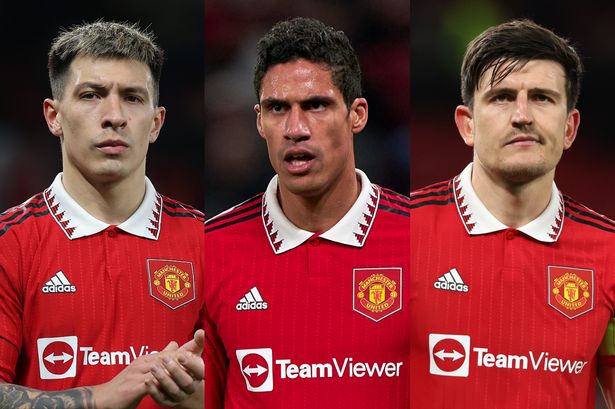



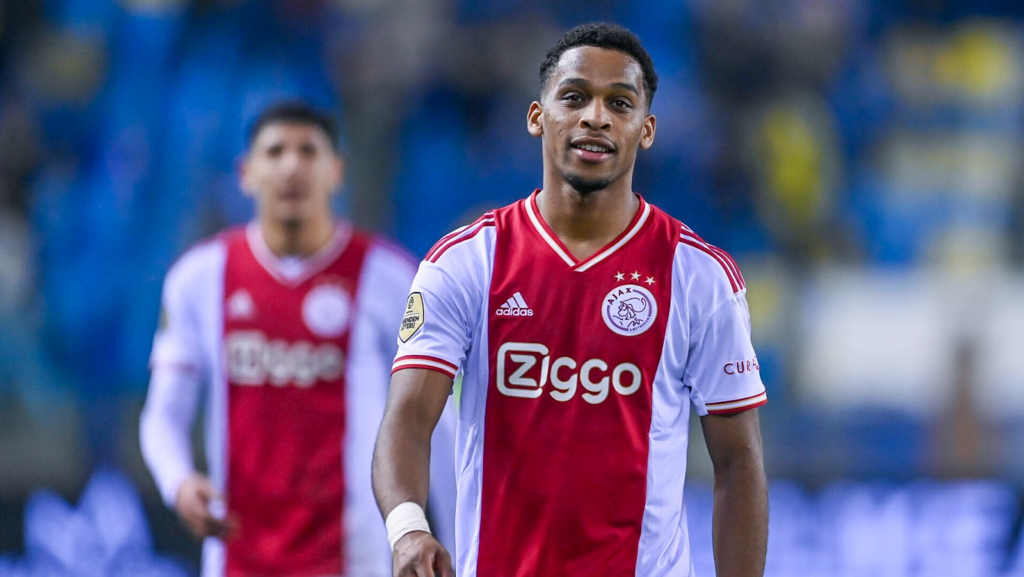

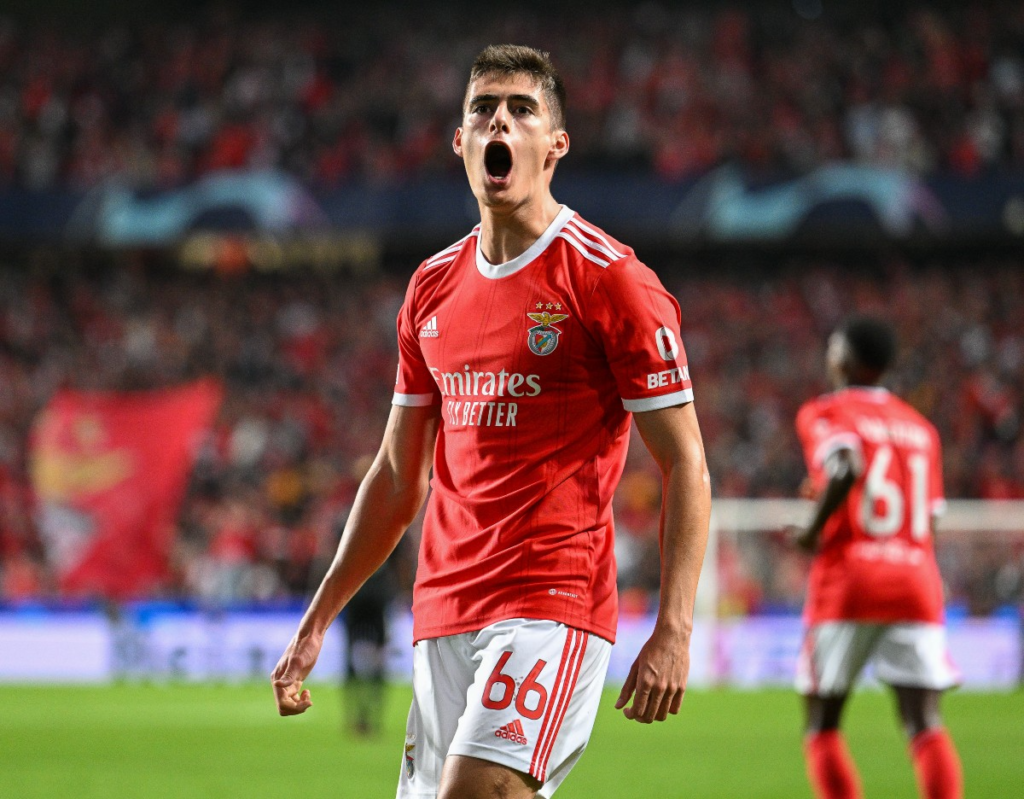

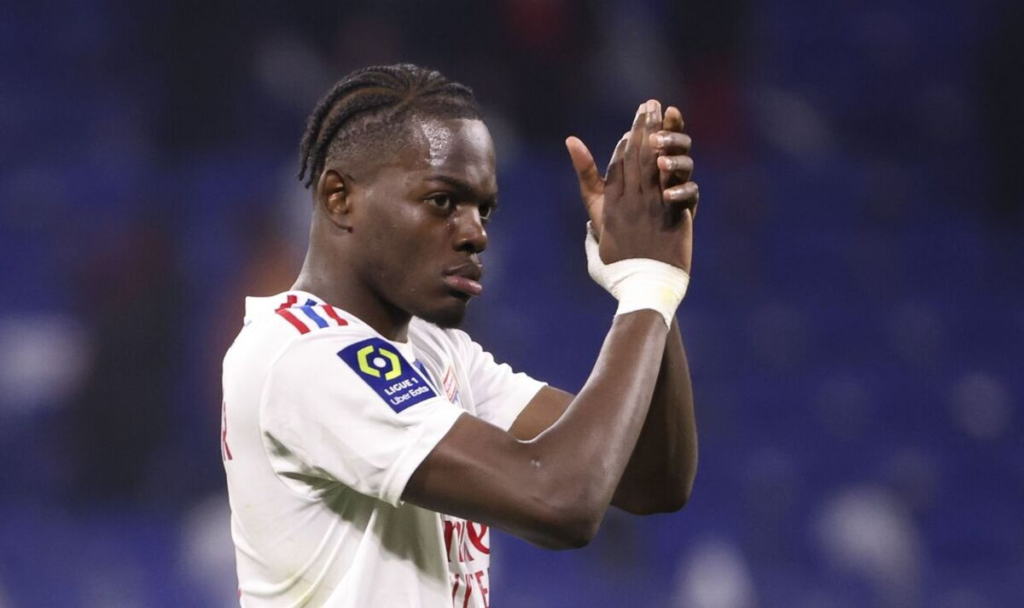

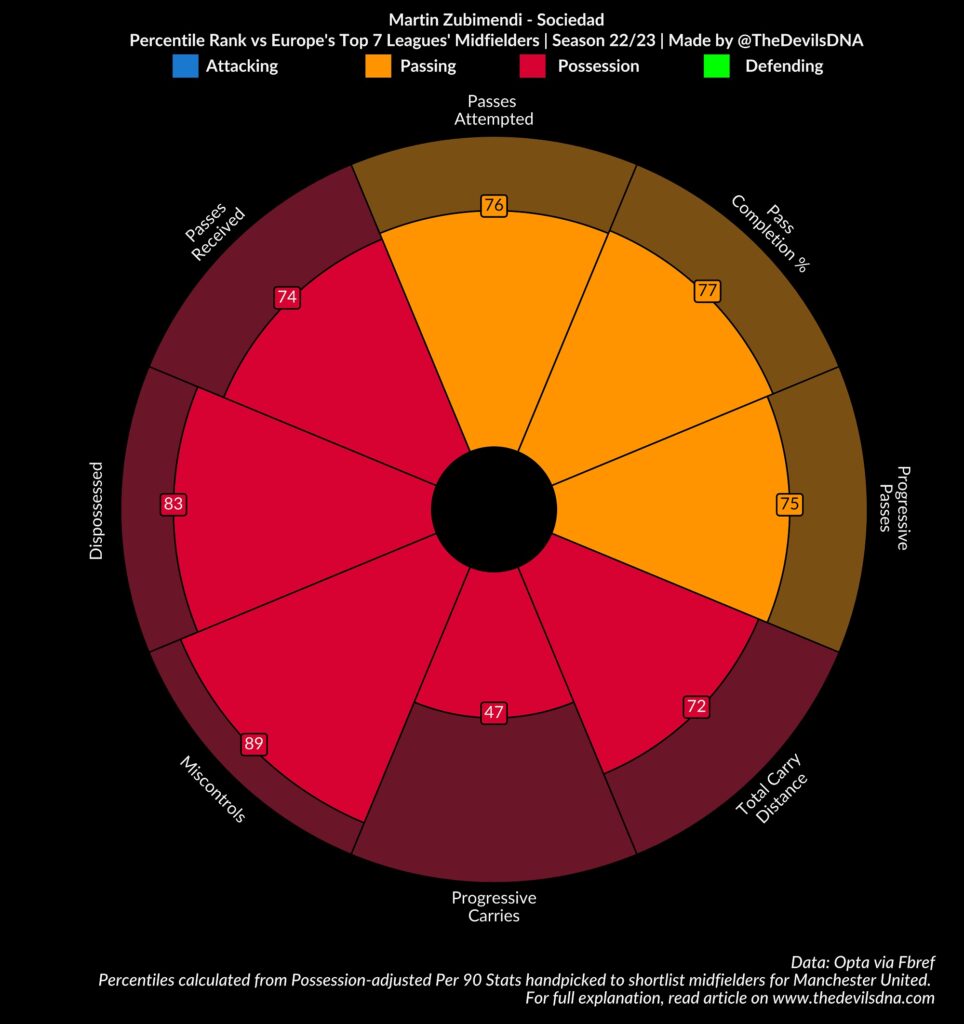

Recent Comments